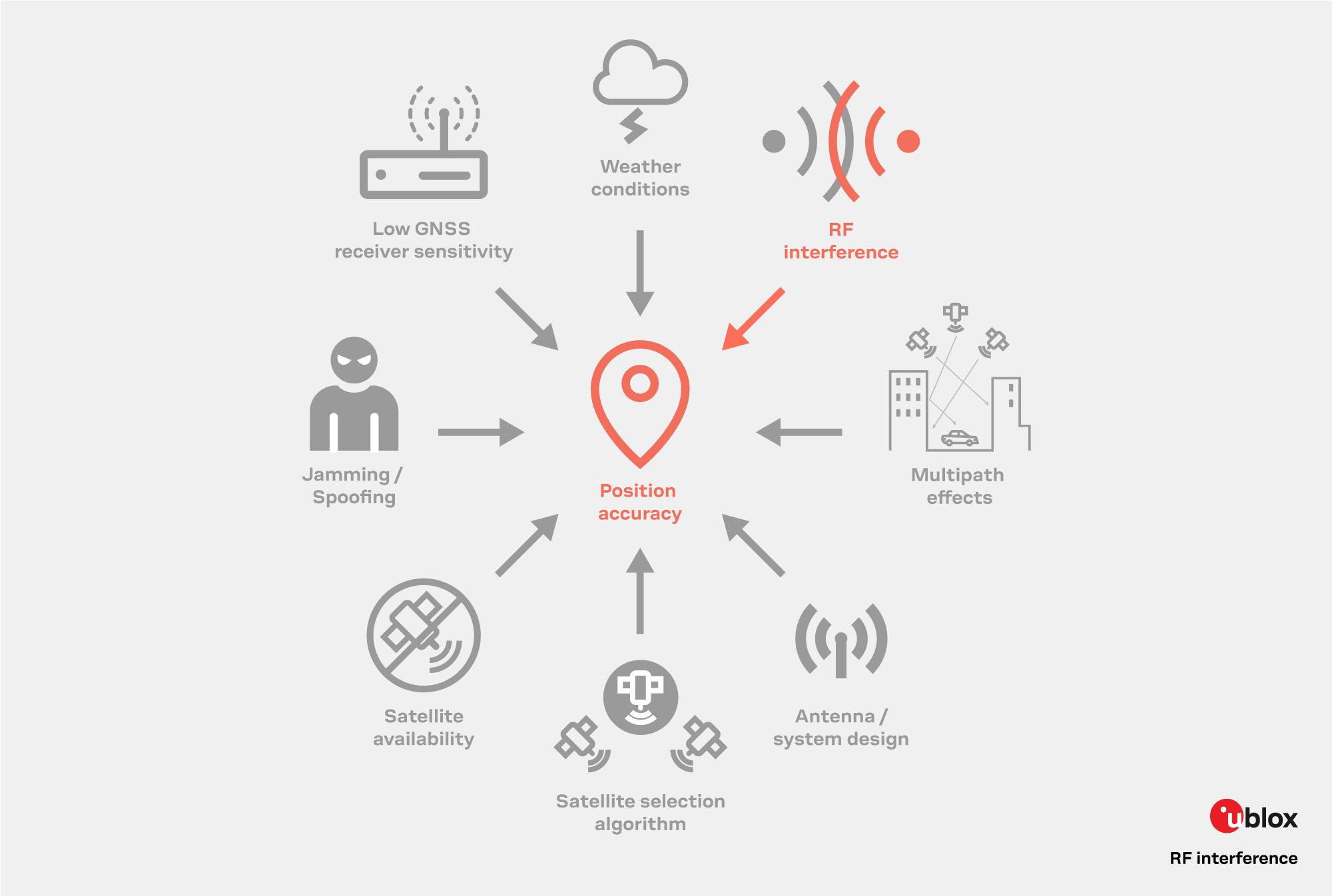
- Support portal
- Evaluation Kits and partner products
u-blox Support
- Product documentation
Documentation
- Investor relations
Investor relations
Tech
|
20 Oct 2022
The rise of GNSS applications that transmit position data directly to the cloud means that GNSS receivers and cellular transmitters exist in close proximity on devices.

This arrangement increases the likelihood of RF interference which has several negative consequences, with the most severe being a loss of position signal completely. In some applications, this could result in a substantial loss of income when the revenue model is on a pay-as-you-go basis, such as dynamic road pricing schemes. Designers need to minimize RF interference in their devices in order to maximize their performance and ensure continuous availability.

Interference degrades the quality of signals, which causes GNSS receivers to take longer to establish a position on start-up. This delay has several knock-on effects. Receivers draw significantly more power during signal acquisition compared to position tracking. The longer this process takes, the higher the power consumption and the greater the impact on battery life. Under these conditions, tracking devices that cannot plug into external power are vulnerable to running out of battery capacity while in use.
Modern GNSS receivers track many satellites from several constellations, making a complete loss of position unlikely. However, temporarily losing some of the tracked signals can lead to a loss in position accuracy. Power consumption increases while the device tries to reacquire signals, and the lower position accuracy may harm the application performance.

Outband interference occurs when signals from outside the GNSS frequency range leak into the GNSS spectrum. As a result, the input signal may exceed the maximum allowed level of the GNSS Low-noise amplifier (LNA). Using a bandpass filter, like a surface acoustic wave (SAW) filter, cuts out the frequency range outside the GNSS spectrum and solves this challenge.
Mitigating the effect of inband RF signals is more challenging than outband interference. Any action taken to reduce the interfering signal will also impact the desired signal. It is, therefore, important to understand the source of interference in order to design the optimum solution.
RF interference is a fact of life for GNSS applications due to the proliferation of cloud-based services that require real-time updates of GNSS positions using cellular transmitters. This interference degrades the quality of GNSS signals impacting the accuracy of readings and power consumption of devices. There are several methods to reduce the impact of RF interference, including the board design and SAW filters.
To learn more about how to reduce RF interference in your application, read our whitepaper here.
Bernd Heidtmann
Product Manager, Product Strategy for Standard Precision GNSS, u-blox